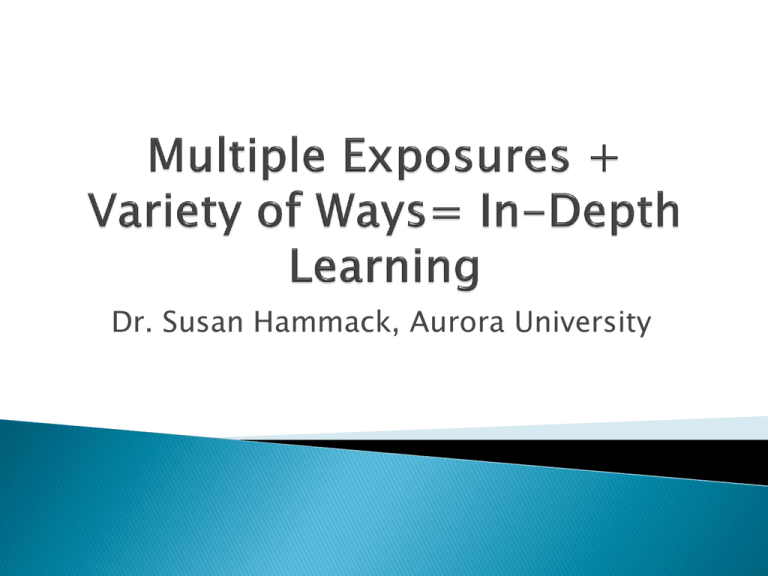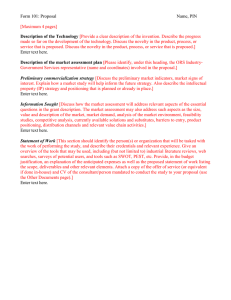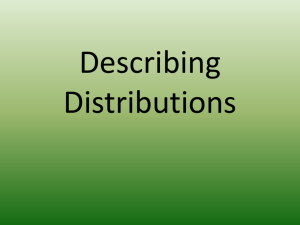Multiple Exposures + Variety of Ways= In-Depth
advertisement

Dr. Susan Hammack, Aurora University According to Judy Willis, “The more regions of the brain that store data about a subject, the more interconnection there is. This redundancy means students will have more opportunities to pull up all of those related bits of data from their multiple storage areas in response to a single cue. This crossreferencing of data means we have learned, rather than just memorized.” Willis, J. (2008). Brain-based teaching strategies for improving students' memory, learning, and test-taking success.(Review of Research). Childhood Education, 83(5), 31-316. When people repeatedly practice an activity or access a memory, their neural networks -- groups of neurons that fire together, creating electrochemical pathways -- shape themselves according to that activity or memory. Like in a system of freeways, the more cars going to certain destination, the wider the road that carries them needs to be. Neuroscientists have been chorusing "cells that fire together, wire together" since the late 1990s, meaning that if you perform a task or recall some information that causes different neurons to fire in concert, it strengthens the connections between those cells. Over time, these connections become thick, hardy road maps that link various parts of the brain -- and stimulating one neuron in the sequence is more likely to trigger the next one to fire. Thus, says Willis, "Practice makes permanent. The more times the network is stimulated, the stronger and more efficient it becomes." Problem: Too much information to remember! Students are bombarded with information all day and night long, much of it digitally. They even sleep with cell phones and have been known to text in their sleep! 99% of the information that goes in, goes out! How are we to help them remember “our information?” The effectiveness of multimodal learning was compared to that of traditional, unimodal learning. Various articles and studies were reviewed in the analysis, and “in general, multimodal learning was shown to be more effective than traditional, unimodal learning.” Results: Schools should motivate the unimodal teachers to become multimodal teachers. Metiri Group (2008). Multimodal learning through media: What the research says. Commissioned by Cisco. Howard Gardner describes three approaches to helping understand “rich topics.” 1. Multiple points to entry into a topic (narrative, numerical, hands-on, etc.) 2. Analogies/metaphors to make connections with previous knowledge. 3. Multiple representations in different ways with different media (graphic, audio, arts, etc.) Gardner, H. (1999). The disciplined mind: What all students should understand. New York: Simon & Schuster. Example: Seria – Absolute Value The multimodal approach gives opportunity to: Rethink Revise Refine Reflect Over time, students take ownership of the “understanding.” After intense learning, reflection gives overworked areas of the brain some rest. Major studies revealed that the arts: * reach students who are not otherwise being reached * reach students in new ways * connect students to each other * transform the environment for learning * provide new opportunities for those already successful Novelty – Incoming stimulus different than what we are used to seeing (receiving). Our brains pay attention to what is different. How can we use this knowledge to impact teaching/learning on our classrooms? Novel event only remains novel for a short time because of habituation. How to modify the typical math class: correct HW, answer questions, present new material, begin new HW, class over. 1. music 2. board work 3. change seating pattern 4. color 5. writing descriptions 6. games 7. hand signals 1. Students problem solving together. 2. “Easier to learn on boards than teacher telling us what to do.” 3. “Colors separate problems, more interesting.” 4. “Made us pay attention.” 5. “I like the variety, something different every day, it’s fun for awhile.” 6. “Novelty helped students get work done.” Employing novel teaching approaches gives the opportunity to connect what needs to be learned with the full range of students who need to learn it! A variety of ways to plan, instruct, and assess. Brainstorm novelty in classroom set up… Brainstorm novelty in instruction… Brainstorm novelty in assessment… Say it, draw it, sing it, dance it, speak it… Experiential learning : Straws Guitar Flute Organ Pipes A pitch is a technical term used in music to describe the extent at which a note is high or low. It depends on the frequency (defined as a number of vibrations in a second) of the sound, measured in hertz (Hz).



